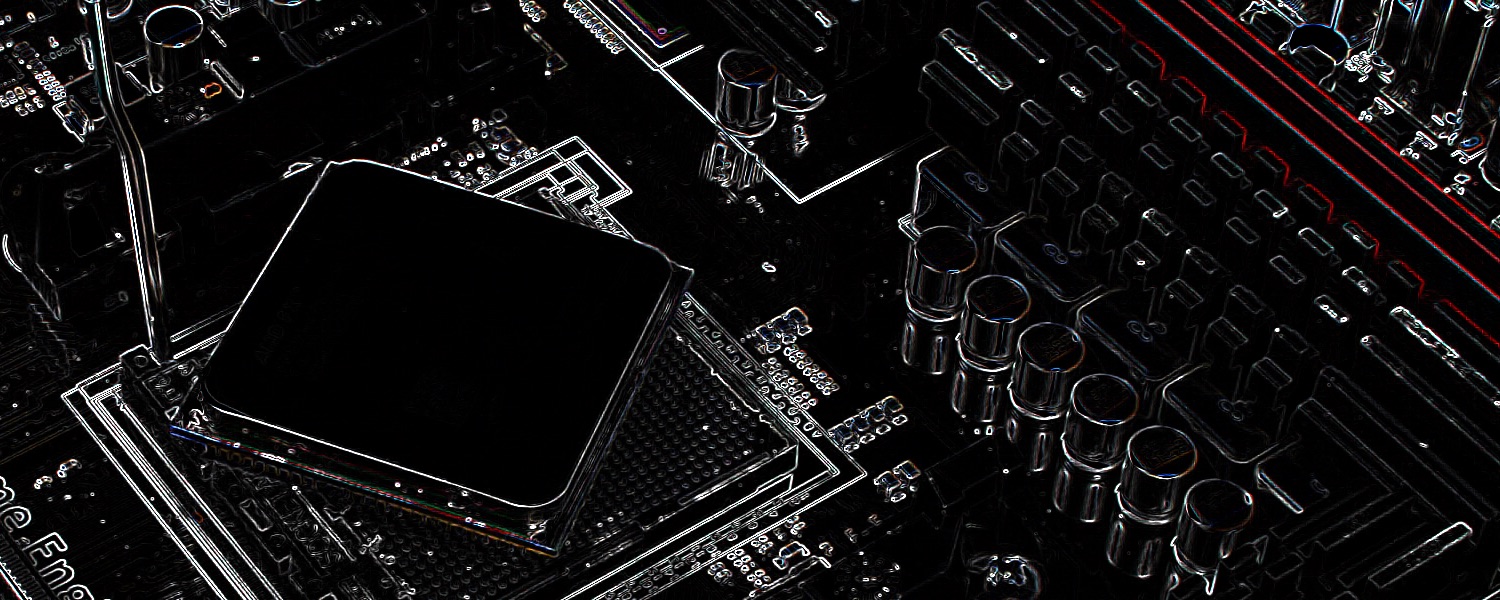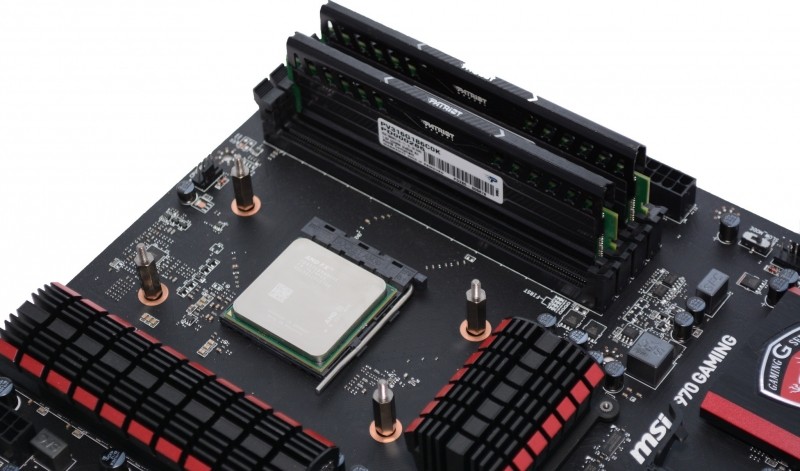The CPU space has been somewhat stagnant for a while now. AMD's FX series is four years old and although it received an update, nothing major was altered, while the Piledriver-based Vishera FX range is over two years old and AMD has resorted to overclocking and even underclocking to create the illusion of new models.
Likewise, Intel hasn't really wowed us since Sandy Bridge four years ago. Its chips have become more powerful and efficient since then, but the generational improvements haven't been as significant as you would expect in that amount of time.
The biggest achievement for desktop processors in recent memory was the eight-core Core i7-5960X, though at $1,000 it's well beyond the reach of mainstream users.
Given how little has changed, you might expect buying a new processor to be fairly straightforward. For us, the choice seems clear: Intel has proven to offer superior core performance with considerably greater efficiency.
However, many enthusiasts argue that AMD offers better overclocking on its more affordable processors and therefore delivers a better bang for your buck.
It's a valid point, as you can buy a quad-core AMD chip for little more than $100 and overclock the snot out of it while the cheapest overclockable quad-core Intel part costs well over $200 – around 70% more.
On top of that, AMD recently released the $150 FX-8320E, an unlocked 4.0GHz chip with four floating point cores and eight integer cores (not truly a full eight-core part as marketed). At that price, Intel only offers the non-overclockable dual-core Core i3-4360 for $155 while a quad-core Core i5-4430 costs $35 more at $185.
With those parts in hand, we're going put the AMD FX-8320E against Intel's Core i3-4360 and the slightly more expensive Core i5-4430 to see which processor offers the best value for budget builders.
Testing Methodology
We will be looking closely at application and gaming performance as well as power consumption figures in each test.
The FX-8320E was tested at its default operating frequency and overclocked at 4.6GHz. The Core i5-4430 and Core i3-4360 don't support overclocking and therefore were only tested at their standard frequencies.
The GeForce GTX 980 was used in all tests, though it played the biggest role in the 3DMark and gaming tests. Although it may seem unrealistic to pair a $600 graphics card with a $140 CPU, by using a powerful GPU we hope to remove related bottlenecks for the purpose of the CPUs comparison.
|
|
Application Performance
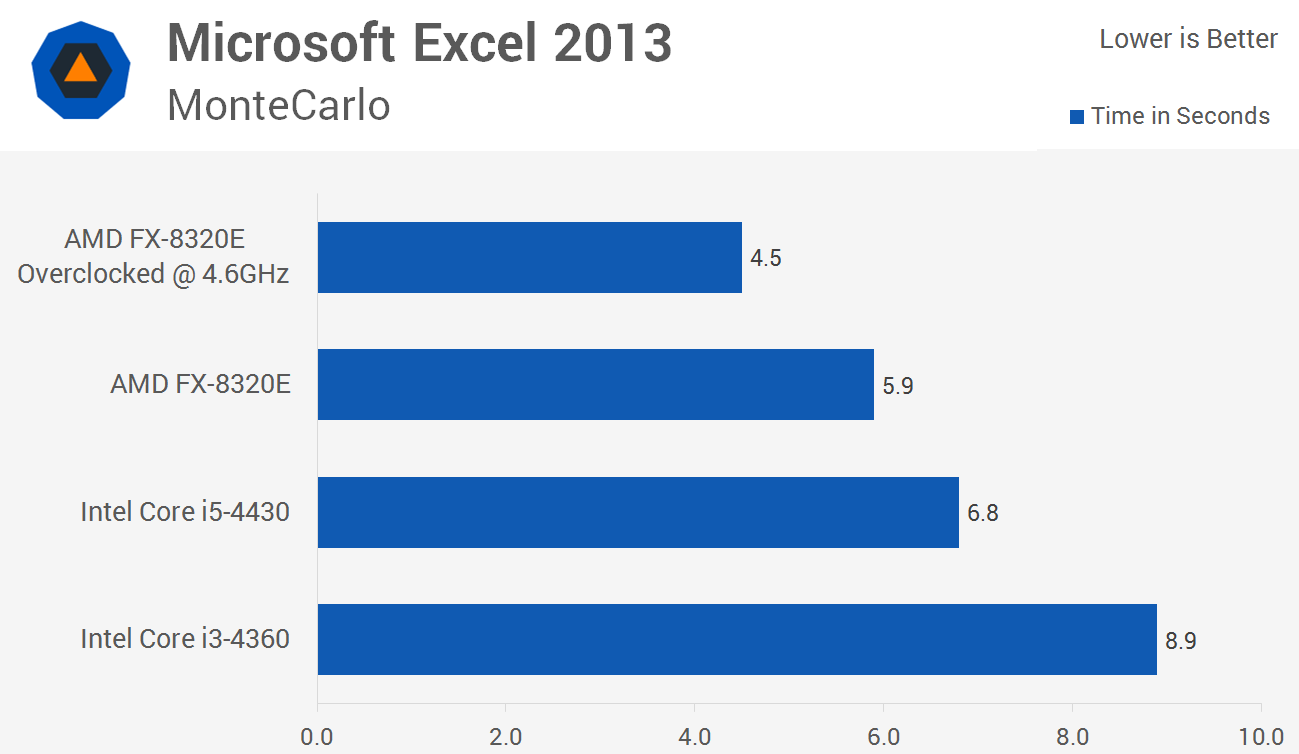
AMD's FX-8320E performed well in Excel 2013, taking just 5.9 seconds to complete the workload and 4.5 seconds once overclocked. At its stock settings, the FX-8320E was 15% faster than the i5-4430 and 51% faster than the i3-4360. Those numbers jumped to 51% and 98% after overclocking.

Excel 2013's power consumption results paint quite the picture. Although the FX-8320E was 15% faster than the i5-4430 and 51% faster than the i3-4360, it also consumed 55% and 65% more power.
Overclocking might have improved performance by 31% but it boosted system power consumption by 78%.
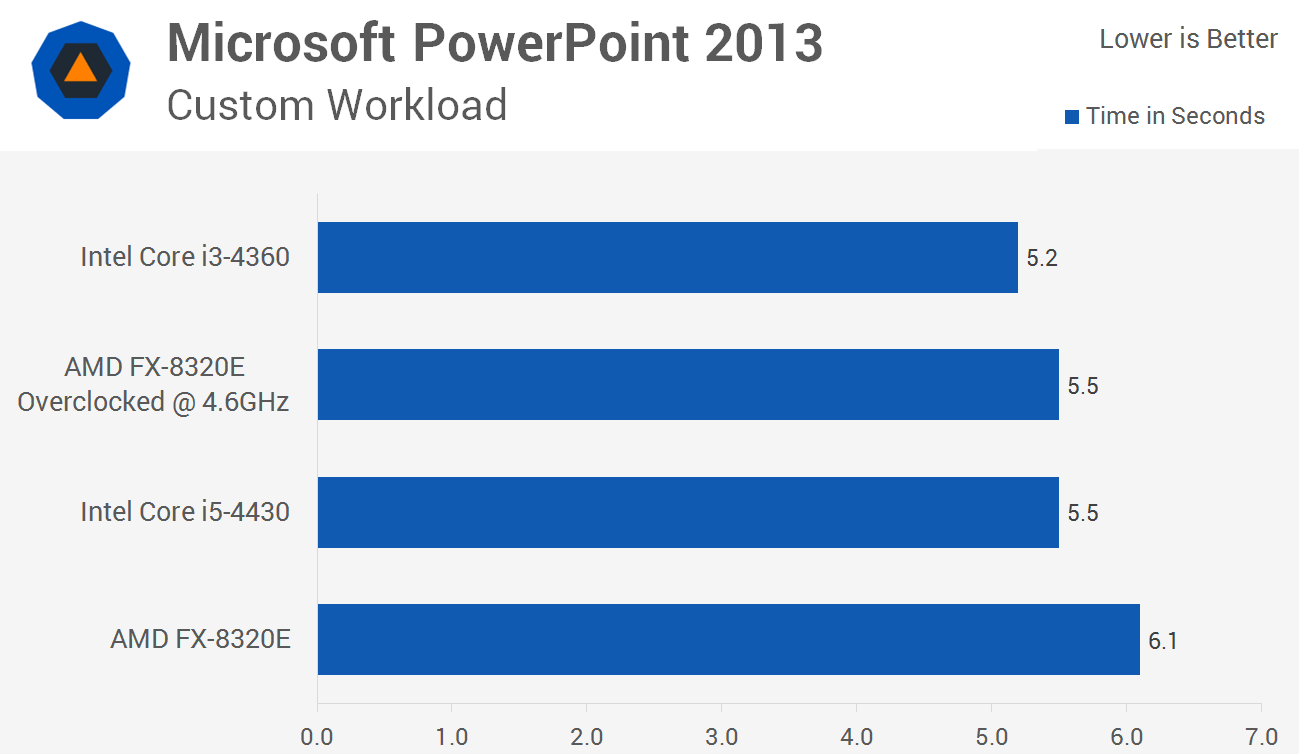
The Power Point performance results were close with the i3-4360 topping our graph at 6% ahead of the i5-4430 and 17% over the FX-8320E, though AMD's part was on par with the i5-4430 once overclocked.

The FX-8320E was 15% slower than the i3-4360 and yet it consumed 72% more power – 154% more power after overclocking, which put the FX-8320E in line with the Core i5-4430 performance-wise.
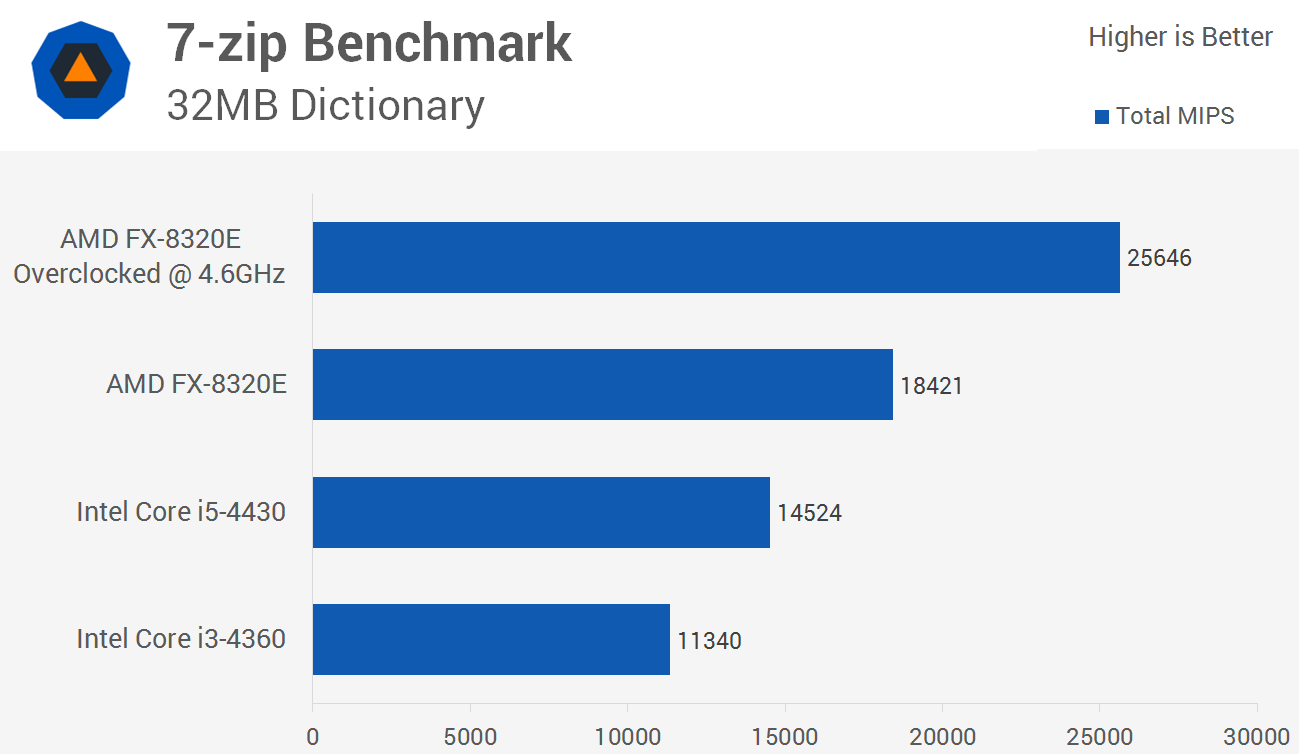
7-zip makes good use of multi-core processors and as a result the heavily-clocked FX-8320E delivers 27% more performance than the i5-4430 and 62% more than the i3-4360. Overclocking the FX-8320E boosted performance by another 39% for a 77% lead over the i5-4430.

To deliver 27% more performance than the i5-4430, the FX-8320E had to consume 61% more power and overclocking the latter to 4.6GHz increased consumption by another 71%, making it 175% more power hungry than the i5-4430.
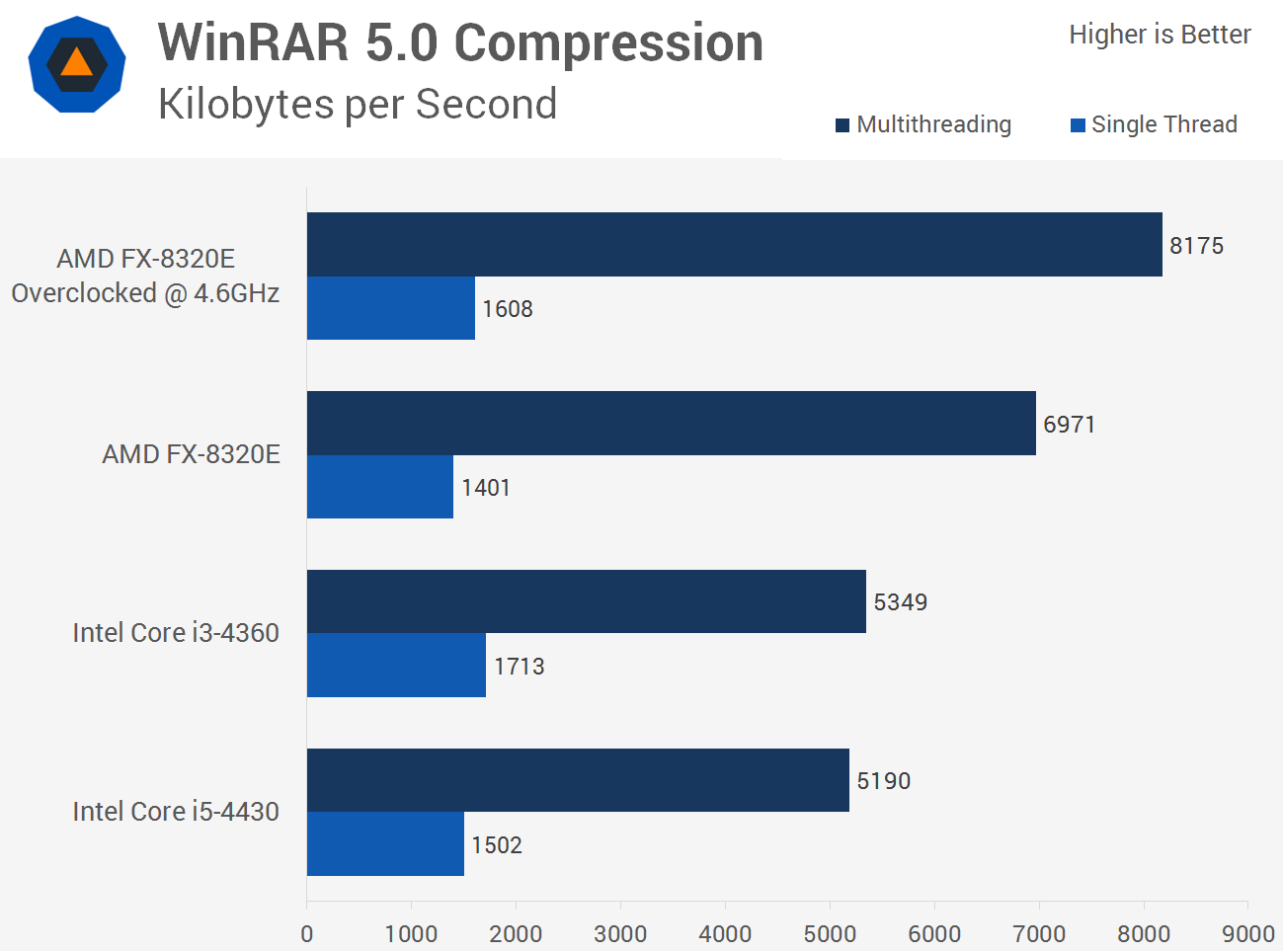
The i3-4360 was actually slightly faster than the i5-4430 in the WinRAR multi-threading test. Again, keep in mind that it's clocked higher and supports four threads via Hyper-Threading.
Despite compressing at 5349KB/s, the i3-4360 was still 23% slower than the FX-8320E and overclocking yielded another 17% for 8175KB/s. However, if we only look at the single thread performance, the i3-4360 was the fastest processor tested, narrowly beating the overclocked FX-8320E.
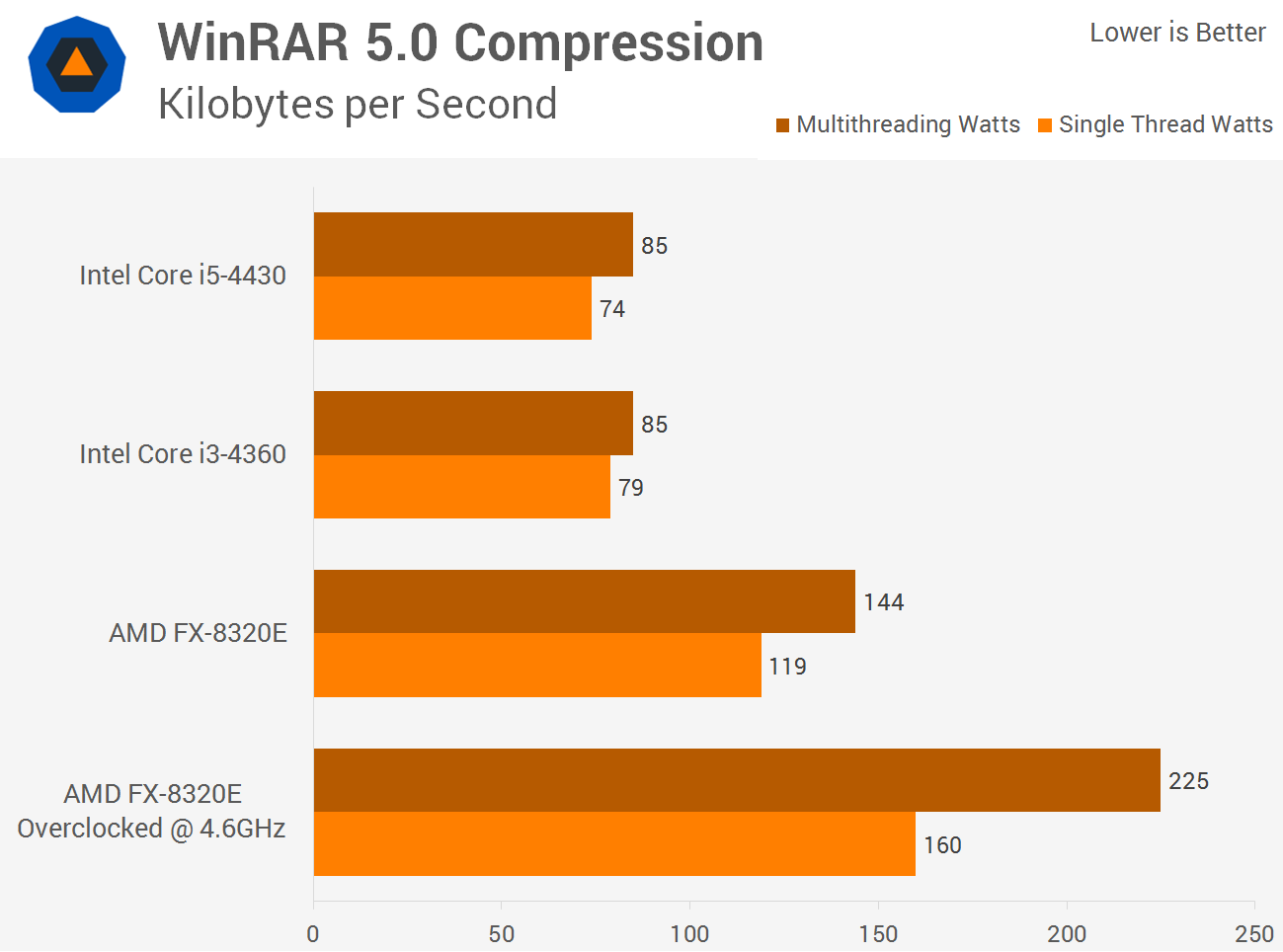
When it comes to WinRAR power consumption the FX-8320E used 69% more power than Intel's processors. Overclocking brought another 56% increase in consumption, making the AMD chip 165% more power hungry than Intel's contenders.
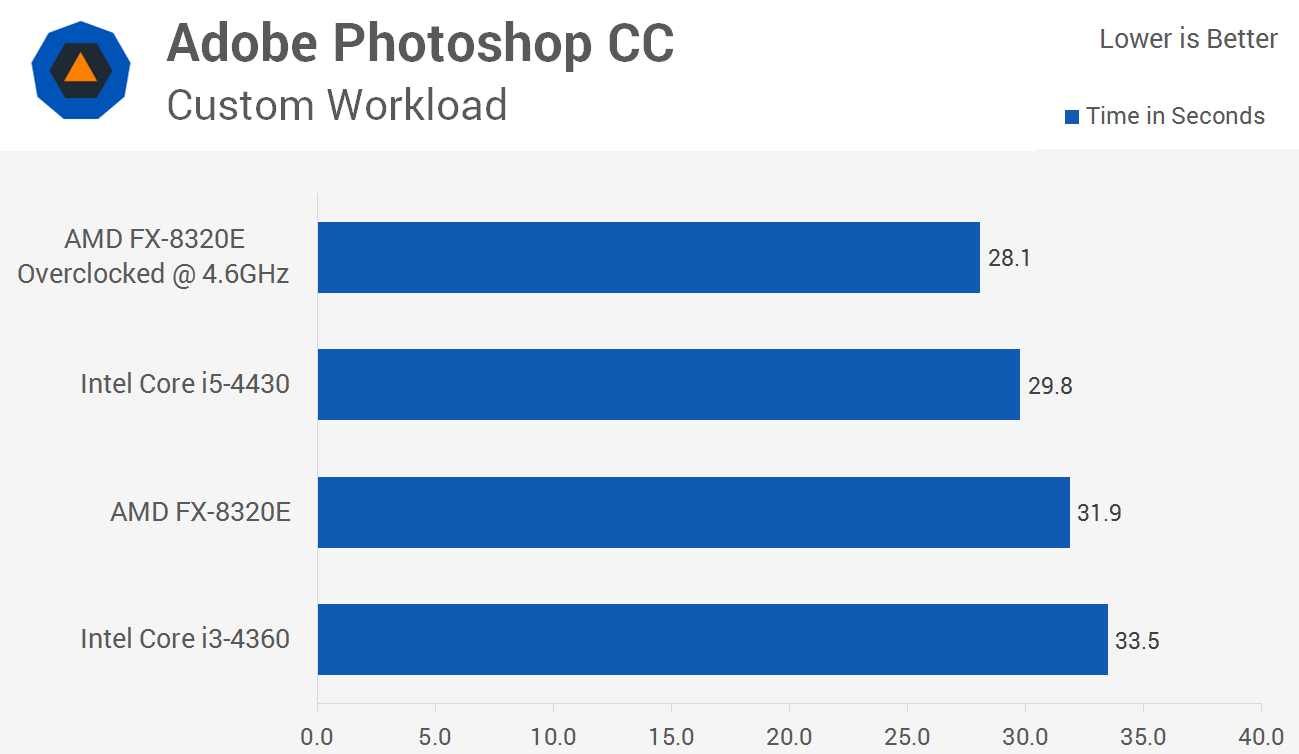
The FX-8320E took 31.9 seconds to complete the workload for 5% better than the i3-4360 and 7% worse the i5-4430. After overclocking, AMD's part was 16% faster than the i3-4360 and 6% faster than the i5-4430.

Here we see that the FX-8320E consumed 41% more power than the i3-4360 while delivering just 5% more performance. The overclocked FX-8320E consumed a whopping 262 watts, which was 45% higher than the stock results.
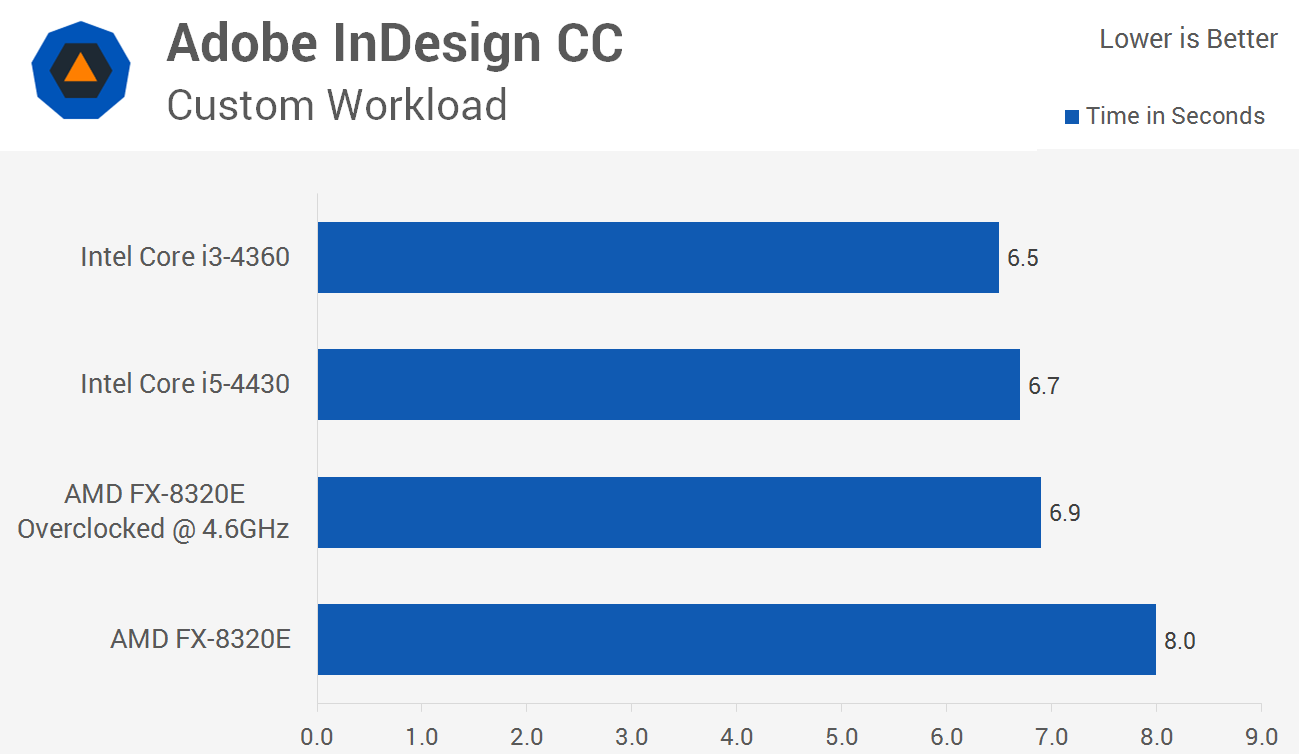
The FX-8320E was 19% slower than the i5-4430 and 23% slower than the i3-4360 when testing with InDesign. Overclocking improved performance by 14% – enough to make AMD's chip just 3% slower than the Core i5-4430.
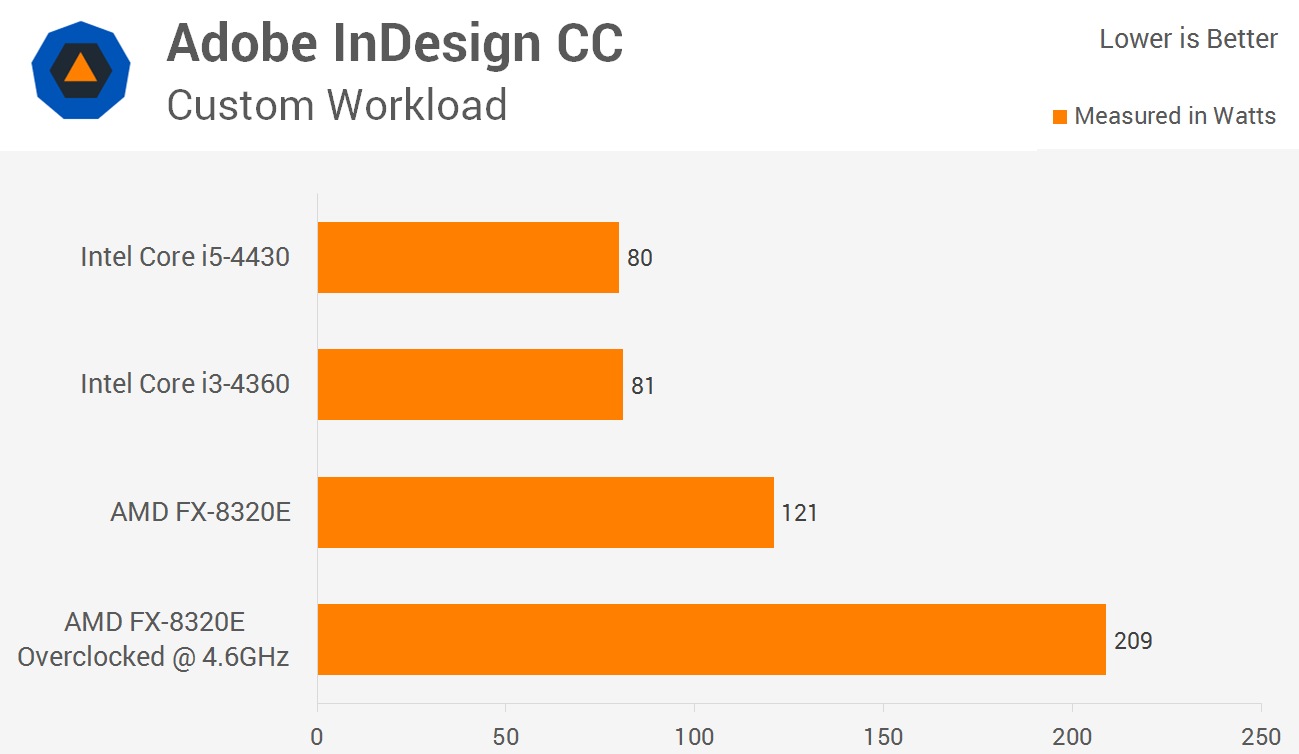
The FX-8320E consumed 49% more power than Intel's processors in InDesign. Overclocking the FX-8320E increased consumption by 73%, making it 158% more power hungry than Intel's chips.

The FX-8320E was 6% slower than the i5-4430 in After Effects CC but it was 10% faster than the i3-4360 and after overclocking it matched the i5-4430.
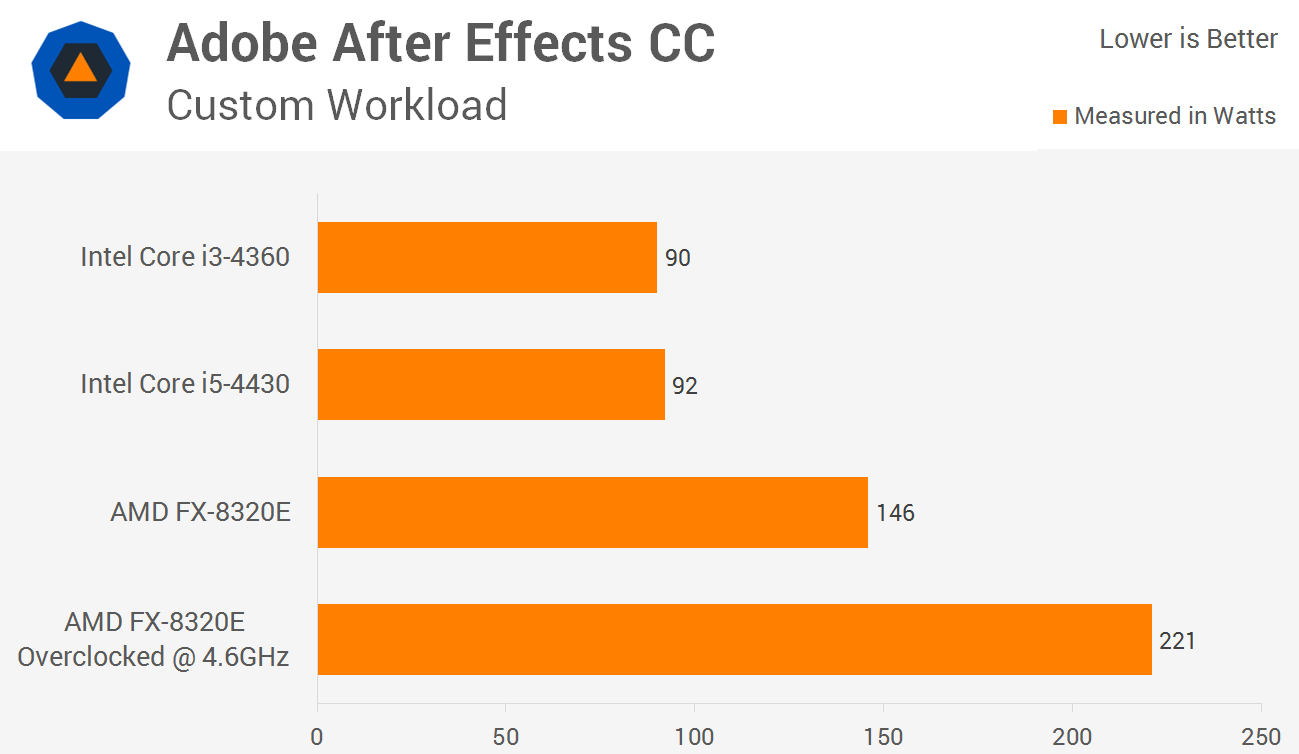
The FX-8320E was 6% slower than the i5-4430 when testing with After Effects CC, yet it consumed 59% more power. Although it was able to match the i5-4430 once overclocked, AMD's part consumed 140% more power.
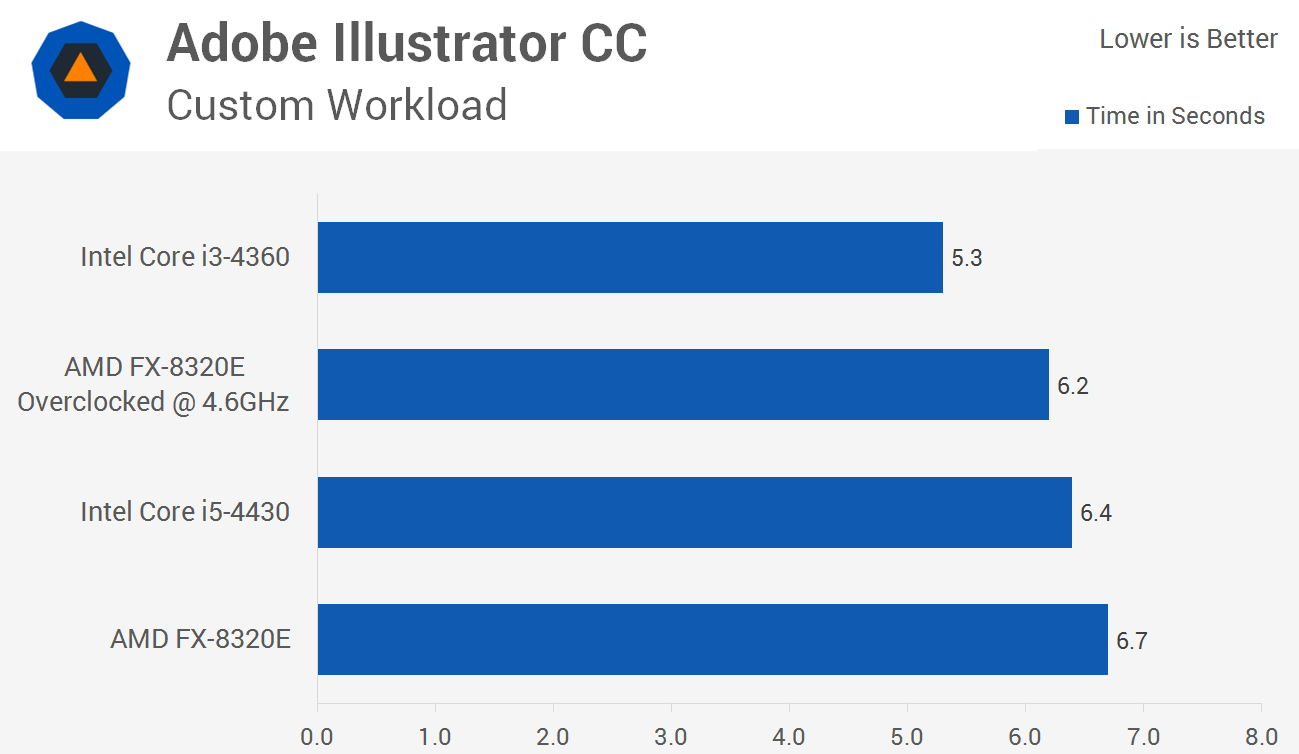
The last application we are testing with is Adobe Illustrator CC and here the FX-8320E is slower than both Intel processors – 5% slower than the i5-4430 and 26% slower than the i3-4360. Once overclocked, the FX-8320E managed to top the i5-4430 but was still 17% slower than the i3-4360.
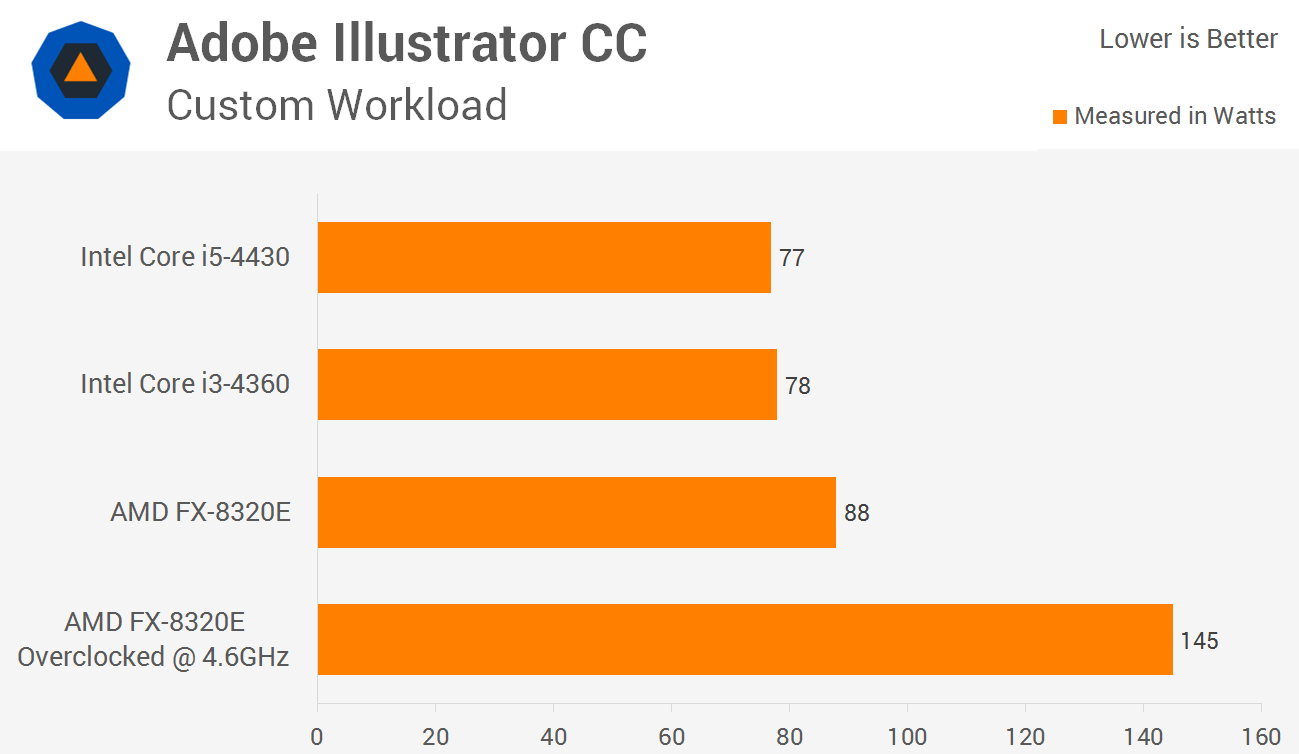
Here the FX-8320E consumed just 13% more power than the i3-4360 but that ballooned to 88% more than the i5-4430 after overclocking.
